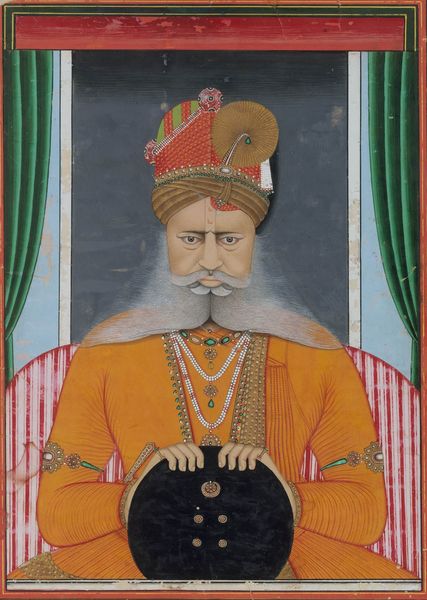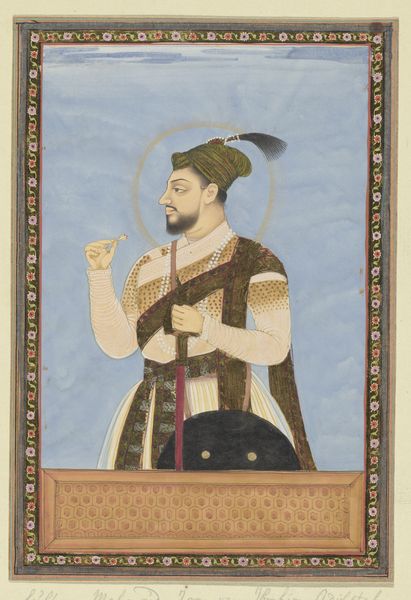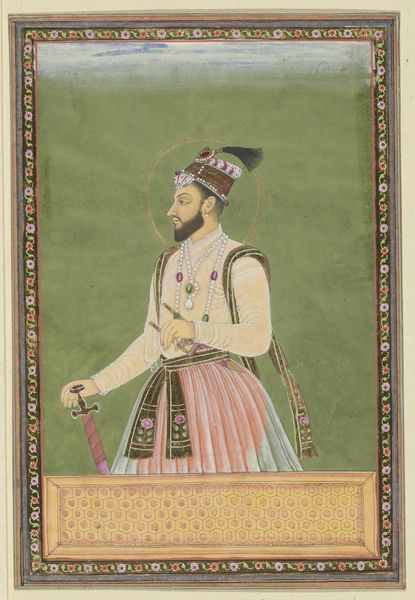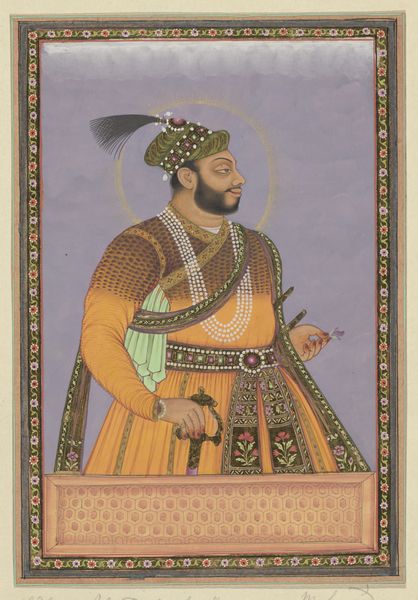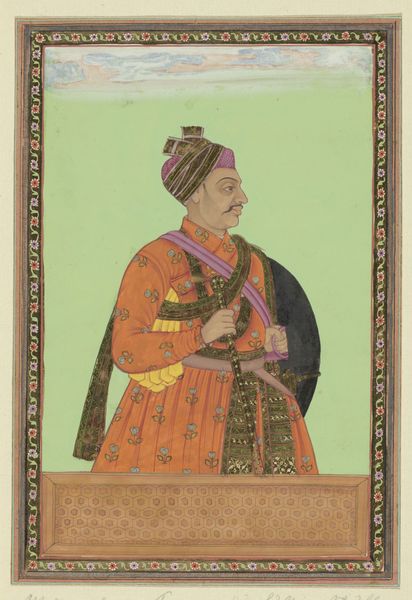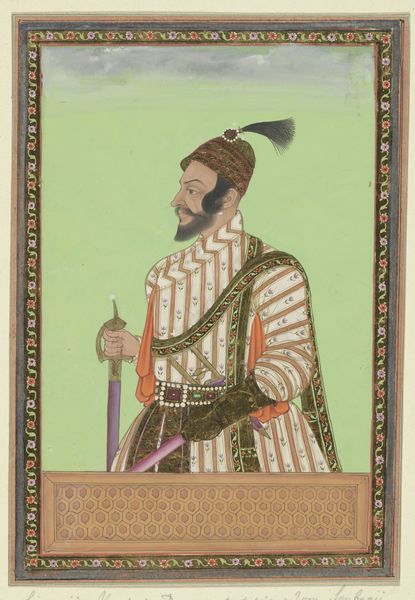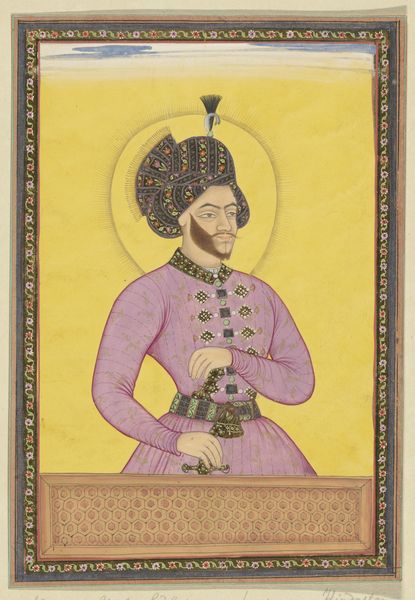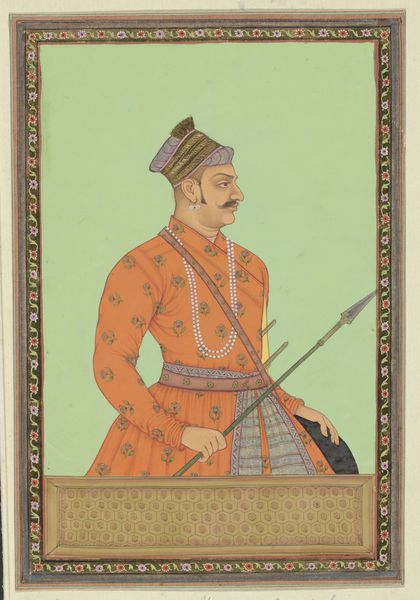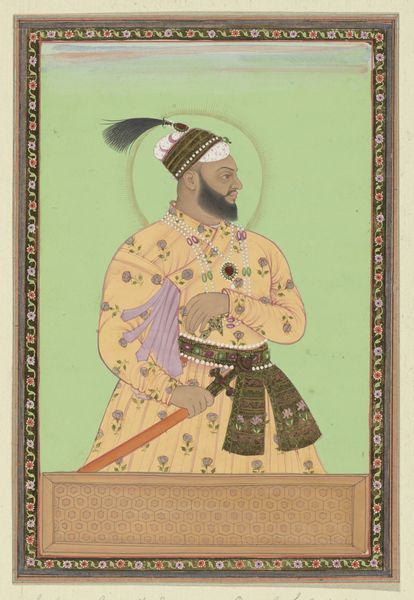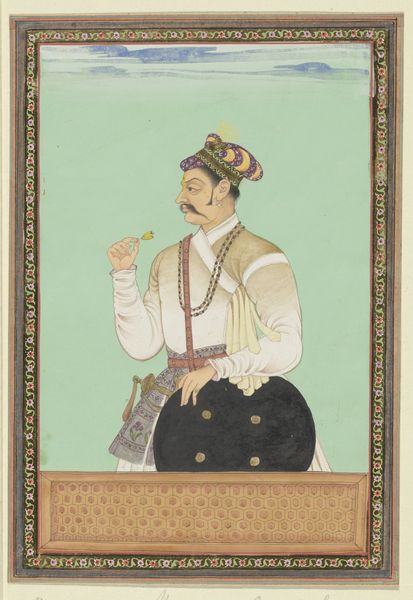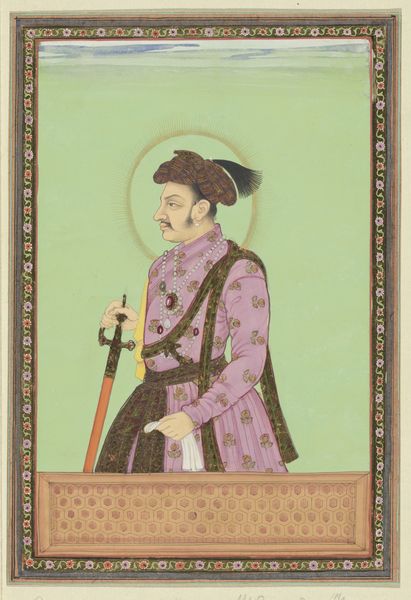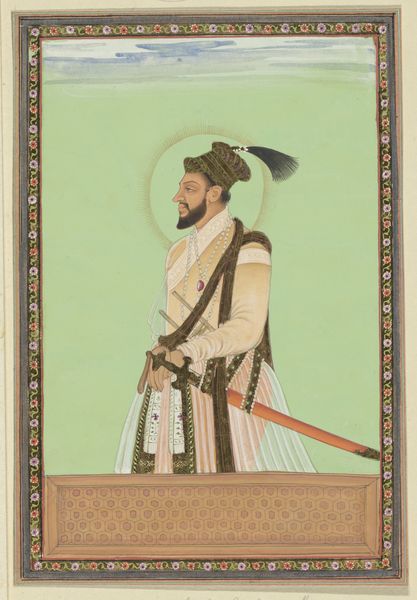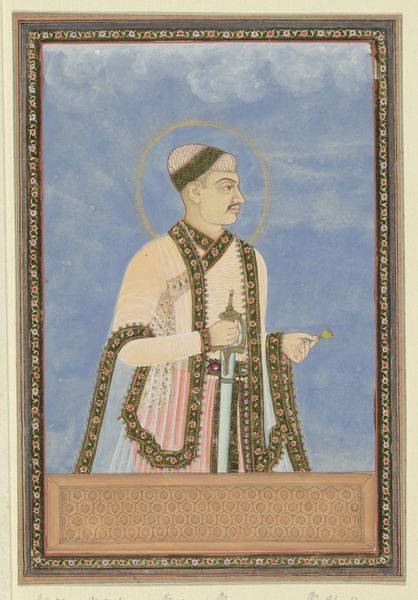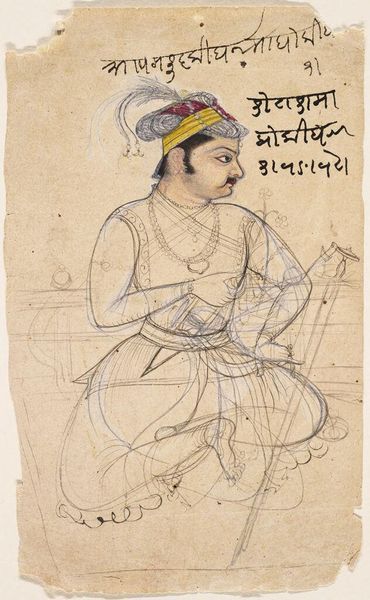
painting, watercolor
portrait
toned paper
painting
asian-art
charcoal drawing
watercolor
miniature
Dimensions: 9 13/16 x 6 7/8 in. (24.92 x 17.46 cm) (sheet)
Copyright: Public Domain
Curator: Look at this captivating "Portrait of Maharaja Mahadji-Scindia," a painting crafted around 1880, housed right here at the Minneapolis Institute of Art. It appears to be rendered with watercolors and perhaps charcoal on toned paper, giving it that distinctive antique feel. Editor: It certainly does evoke a sense of the past. My first impression is one of quiet authority. The muted palette lends a contemplative, almost melancholic air. He seems very self-contained. Curator: It’s fascinating how such seemingly simple materials can convey so much about power and status. Beyond the artistic technique, this portrait provides a window into the political theater of 19th-century India. The jewels, the elaborate turban—these weren't merely fashion statements, but declarations of authority and wealth. Editor: Indeed. I'm curious about the choice of a miniature format for such a powerful figure. Was it intended as a personal memento, or did it serve a broader political purpose? How might it have been displayed or circulated? Curator: That's the enduring question with portrait miniatures, isn't it? Their intimate scale suggests a personal connection, a treasured object passed between individuals. However, it is highly likely this was commissioned for a wider audience, intended to project a certain image of the Maharaja. Look at the symbols and how that represents identity! Editor: You’re right. Even the way he’s holding the sword – not aggressively brandishing it, but rather holding it as part of his presence, an aspect of his selfhood, if you will, does hint at how this image functions as a representation. Curator: And that is how images can have emotional, cultural, and psychological weight, telling a narrative of an individual and an entire culture that will have ramifications far beyond the image. The very act of creating and preserving images connects us through cultural memory. Editor: Analyzing its style, materials and provenance gives clues about socio-political conditions and beliefs. So we examine the culture that informs not just the artwork, but those that follow from it. Curator: Looking at it this way brings a whole new significance to something that can be easily passed off as something rather dated. Editor: Absolutely. Thinking about its history allows me to see and understand it with renewed vision.
Comments
Maharaja Mahadji-Scindia, ruler of the Gwalior district in central India, died in 1894. Although the ruler is shown in a formal pose, the painting is generally more illusionistic and less idealized than the earlier royal portraits exhibited here. This difference is due to the influence of both photography and the increased taste for naturalism engendered by so-called "company school" painting. With the advent of photographic portraiture in the late nineteenth century, sketches such as this, as well as finished portrait paintings, increasingly resembled the work of the portrait-studio camera.
Join the conversation
Join millions of artists and users on Artera today and experience the ultimate creative platform.
